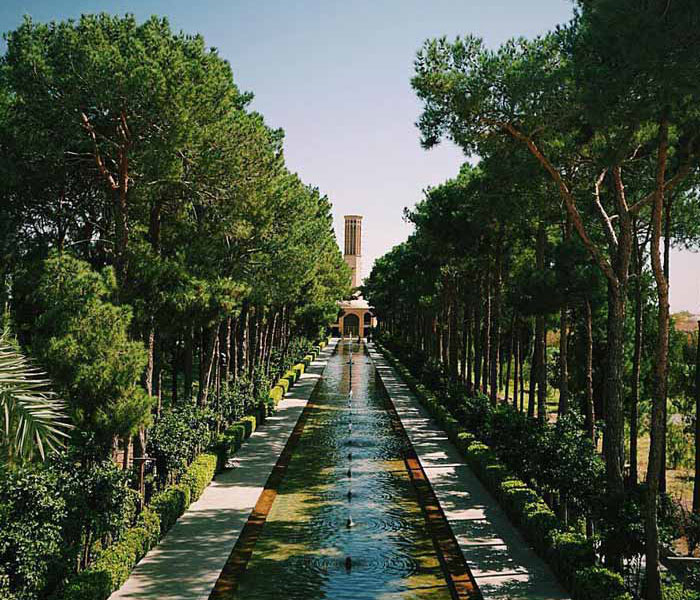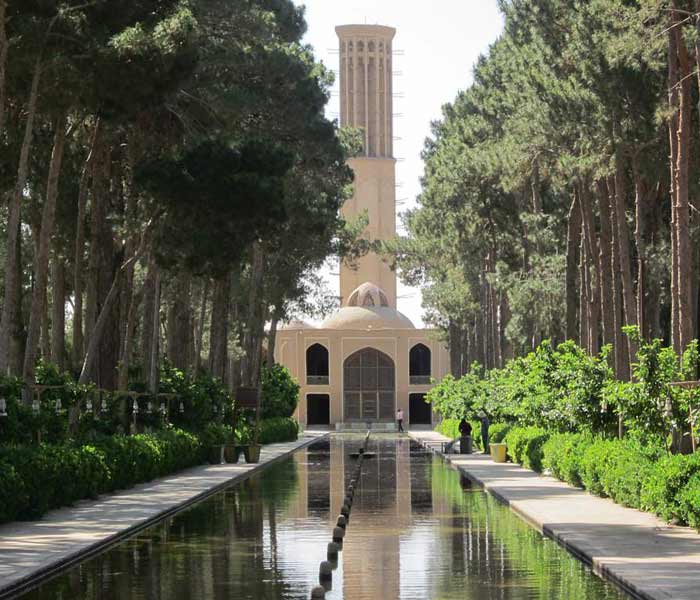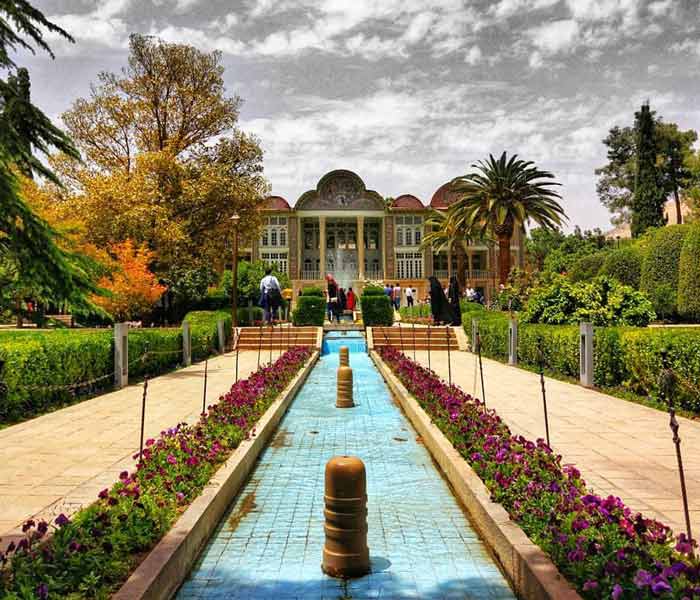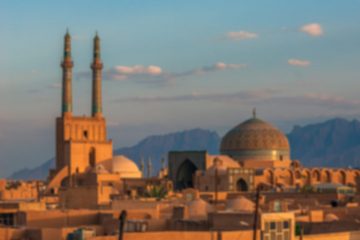Persian Garden | Paradise on Earth
Persian Garden represents a unique style of garden, which has spread its influence from West, Spain in particular, to India. The focal philosophy of an Iranian Garden is creation of paradise in the aridness of Iranian Plateau, much like a prosperous oasis in the desert, as opposed to other styles of European or Japanese Gardens.
The origin of Persian Garden design dates back to 6th century BC, with the garden of Cyrus the Great in Pasargadae as the prototype. A Iranian Garden aims to symbolize Eden and take the best advantage of four Zoroastrian elements: water, earth, sky and plants.

Persian Garden is an oasis in the desert.
While diversified, there are certain elements that all Persian Gardens share as their signature! Such individuality of design led to inscription of 9 Persian Gardens in Iran as UNESCO World Heritage sites, in 2011.
#1 Chief Elements of Iranian Gardens
Chief Elements of Iranian Gardens : While Persian Gardens can be found in different regions, their signature brilliance is better conceived in arid and hot regions of Iran, where water sources are scarce, sunlight and heat are plentiful and cool shades are a rare luxury the harsh climate deny of man.
Hence, water, harnessing the light, lush vegetation are the principal elements of a Persian Garden.

Dowlatabad Garden of Yazd
So Persian Gardens thrive on another genius invention of Iranians, qanats, underground water tunnels, channeling subterranean waters to earth surface to enable builders of the garden to use water for maintenance of the lush garden and aesthetic design of it.
#What Is the Purpose of a Chahar-Bagh?
The primary purpose of a Persian Garden is leisure and relaxation under the soothing shades of trees, with streams of water and fountains dulling the dry heat, and pampering the ears. So, a Persian Garden is not usually a permanent residence, but a recreational retreat for its affluent owners.

Shahzadeh Garden of Mahan, Kerman
Set foot in a Persian Garden, and you feel the difference of temperature and cool from the dry hot weather of the outside! This is the miraculous mastery of an engineered Persian Garden.
#2 Persian Garden Layout
Persian Garden Layout : Persian Garden is a walled long rectangular space, constructed on the gently sloping earth to allow flow of water, and in the proper direction to best harness sunlight.
#1 Chahar Bagh (4 Gardens)
It is divided into 4 sections (called Chahar-Bagh). Man-made rills of water both circulate the garden and divides the garden in a cross-shape pattern. Tall trees line the circumference of the garden and each 4 smaller sections to provide shades during the day, while fruit trees and flowers are planted in the inner area.

Layout of Fin Garden in Kashan
#2 An Ornate Pavilion
Most common edifice in the garden is an ornate pavilion (a freestanding structure), located in the upper one-third section of the longitudinal axis to induce a sense of grandeur to the visitor who always enters the garden from the lower end through a grand portal entrance.
A lush pond is built in front of the pavilion, where 2 axes of water cross. The pavilion is not at all enclosed, but usually open on all 4 sides through arches to allow in the refreshing air, so masterfully created in the garden. A petite pond can be found in the pavilion as well.

Fin Garden of Kashan
#3 Top 5 Famous Persian Gardens
Top 5 Famous Persian Gardens : Although Persian Garden is the basic layout of parks, private and public gardens in Iran, we are going to introduce the most famous historical Persian Gardens of Iran.
#1 Persian Garden of Pasargadae
Gardens of Pasargadae are the earliest (6th Century BC) examples of Persian Garden. Although not much is left of the once majestic city of Pasargardae of Cyrus the Great, the remnants of “Four Gardens” layout of the royal ensemble point to the first prototype of Persian Garden design.
Interesting to know the Latin word “Paradise” is derived from the ancient Persian word “ Paradaiza” meaning a walled space or garden.

The Taj Mahal is largely influenced by Persian Garden design.
Taj Mahal in Agra, India, and Alhambra gardens in Spain are largely influenced by Persian Garden design.
#2 Shahzadeh Garden of Mahan
Shahzadeh Garden of Mahan : Located in the arid climate of Mahan, Kerman Province, Shazdeh Garden, 55,000 m2, is one of the brilliant examples of Persian Garden.
Initially built in 1850, the garden was renovated to its current form in 1870 by the Qajar governor of the region.

Pavilion of Shahzadeh Garden of Mahan, Kerman
#3 Dowlat Abad Garden of Yazd
Dowlat Abad Garden of Yazd was built in 1747, with an area of 70,000 m2. Originally, the garden was fed by a 65 km long qanat from town of Mehriz, south of Yazd.
The garden is famous for its tallest wind-catcher in the world, 33.8 m. The monumental wind-catcher plays a significant role in the cooling of the pavilion’s chambers.

#4 Eram Garden of Shiraz
Eram (Persian for Eden) Garden of Shiraz is one of the oldest Persian gardens in Iran, dating back to 13th century; However, the Persian Garden layout was most probably established in the 11th century.
During the centuries, Eram garden went through multiple ownership and renovations, especially during the Qajar times (18th and 19th centuries). The last famous owner of the garden, was the reputable Shiraz Qavam Family.

Eram Garden in Shiraz (Photo By @
lorenzo.vanny on Instagram)
The 3-floored pavilion of Eram Garden is a masterpiece of Iranian architecture, tilework, stucco and painting.
Today, Eram Garden are part of the Botanical Garden (1983) of Shiraz University.
#5 Fin Garden of Kashan
Fin Garden of Kashan is the oldest extant Persian Garden in Iran in terms of maintaining its original form and architecture, since the Safavid Era (16th century). The Garden was also expanded during the early Qajar Era (19th Century).

Fin Garden in Kashan
Amir Kabir, the prominent Chancellor of Naser al-Din Shah Qajar was assassinated, by the order of the Shah, in the Fin Bathhouse in 1852.


